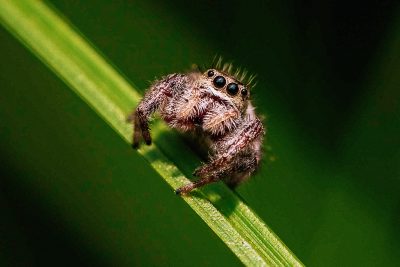Michael Runtz shares fascinating facts about animals associated with Halloween
Ravens, Owls and Bats — Oh My!
In the spirit of Halloween, we’re sharing fascinating facts about spooktacular critters.
Read on to learn about owls, bats, ravens, wolves and spiders from Michael Runtz, an instructor in Carleton’s Department of Biology and one of Canada’s foremost naturalists, nature photographers and natural history authors. Along the way, discover wildlife research taking place at Carleton, like that of recent MSc graduates Lauren Maretto and Julia Put, who conducted research on bats as members of Prof. Lenore Fahrig’s lab.
Happy Halloween from the Faculty of Science!
OWLS: Silent Hunters with Rotating Heads and Reversible Toes
Did you know?
- They use their faces to hear. They have feathers that form discs on either side of their face, around their eyes, that act like satellite dishes to capture sound and direct it back down to the ear openings on either side of their head.
- They have auditory crosshairs. Wide heads and asymmetrical ear canals allow them to tell precisely where a sound is coming from, up to three-millionths of a second.
- They have completely silent fight. Their wings and feathers have silencers – soft, fringed edges – that breaks the air up. The feathers on top also have a soft pile, unlike fast flying birds like hawks or falcons, who have hard feathers for thrust.
- They can turn their heads 270 degrees. Owl neck vertebrae are ten times larger than the blood vessels that run through them. They also have large pools of blood they can draw from, so that if they happen to pinch off blood vessels while turning their heads, they can continue to get blood to the brain.
- They have one toe on each foot that’s reversible, which helps them to grab things.
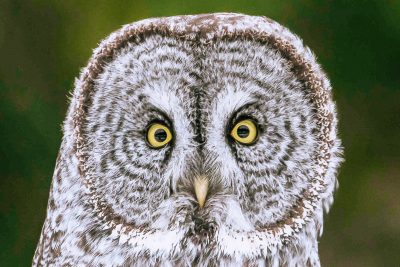
BATS: Busy Eating Their Weight in Insects
Did you know?
- They are the only mammal that truly flies.
- Bats can consume the equivalent of their body weight in insects in a night.
- They use echo-location to find their prey; the first frequency of sound they use is for surveying the area, and when they hit something of interest, they can modulate the frequency to create faster pulse rates, giving them a finer picture of what’s there.
- In winter, bats go dormant, but once they give birth in spring, the females go on a maternity roost while the males roost separately.
- Bats help to make tequila in Mexico by pollinating agave flowers, thereby increasing genetic diversity among agave plants. Bat biologists in Mexico are working with agave farmers to promote healthy crops in this way.
- Tip: Shake your car keys above your head and a bat may just swoop down to check you out!

Wildlife research at Carleton:
“My MSc research in the Fahrig lab used acoustic recorders and insect traps to compare bat activity and bat prey availability at organic vs. conventional agricultural fields. We matched organic-conventional pairs of fields such that in each pair the fields were similar in size, hedgerow length, and surrounding landscape composition. We found that organic fields had greater bat activity and bat prey availability than conventional fields.” – Julia Put, MSc Graduate, June 2018
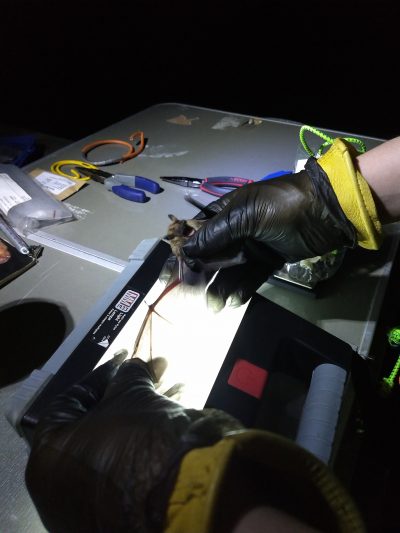
“My research aims to inform effective management of bat habitat in urban environments, since urbanization is increasingly impacting wildlife. Specifically, I aimed to find how far away in Toronto bat activity is impacted by the addition or loss of tree canopy, which was about 200m. In other words, if we chopped down or planted trees in a backyard or park, it would influence bat activity about 200m away.” – Lauren Moretto, MSc Graduate, June 2018

RAVENS: Problem-Solvers with Puzzling Vocals
Did you know?
- They were extremely rare in Ottawa fifty years ago but now commonly nest in the city, oftentimes on Carleton’s campus.
- They are part of a group called corvids and are known to be one of the smartest birds in the world for problem-solving.
- In winter, young ravens get together around an animal carcass, scream and draw more ravens in. Over the weeks that they’re together, they do courtship and pair up for the next year.
- They have really diverse vocalizations that often puzzle people. Sometimes they sound like bells or screams.
- They have bristle feathers on their bills that serve as dust-busters, keeping garbage out and warm air in.
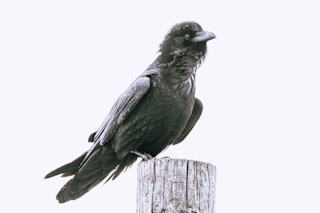
WOLVES: It’s Their Pack and They’ll Howl if They Want To
Did you know?
- They don’t howl at the moon – that’s a myth – but they do howl for communication.
- They also use howling as a spacing mechanism. Packs maintain territories and howling defines the territory boundaries to keep other wolves out.
Join a Wolf Howl!
For the last 25 years, Michael Runtz, an instructor in Carleton’s Department of Biology and renowned naturalist, has led a wolf howl at Bonnechere Provincial Park. In 2018, the howl saw over 250 attendees. Runtz also leads an annual wolf howl at Algonquin Provincial Park. Both howls take place in August.
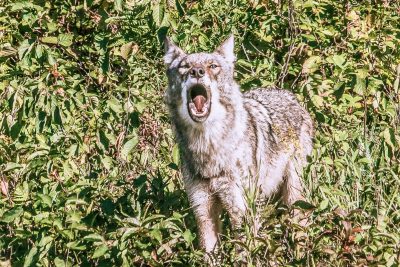
SPIDERS: Oh, The Webs They Weave – in 20 minutes!
Did you know?
- They recycle their broken webs by eating and creating new silk out of them.
- They can build huge webs – complex orb webs with circular patterns – in just 20 minutes.
- They have seven different kinds of silk; some are sticky, some more stretchy. If silk dries out, it becomes brittle, so to build webs they use silk that absorbs moisture from the air.
- This explains why, at daybreak, spider webs are covered in dew drops!
- They have eight legs AND eight eyes.
- They don’t all build webs. Jumping spiders, for example, hunt visually and track their prey using a mechanism in the back part of eye – not the eyeball itself.
- They have advanced care for their young. Female Nursery Web spiders – commonly called dock spiders – carry the egg sack which contains up to 1000 little eggs in their jaws. Closer to hatching time, they build a special web and put the sack inside, and then guard the babies until they are ready to go out on their own.
- Wolf spiders spin a hammock of silk around their eggs and roll it into a ball, which they then carry on their backs. Once hatched, the babies climb on the back of the mother and she carries them around until they are big enough to leave on their own.
